
Enjoy the tranquility of your surroundings while casting a line in one of Jasper’s many lakes that are great for fishing.
B. Morin
How to identify your catch
Jasper National Park
Anglers are responsible for correctly distinguishing one fish species from another. If you are not sure which species you have caught, release it immediately. There are zero possession limits for many native species.
Legend
- BNP: Banff National Park
- JNP: Jasper National Park
- KNP: Kootenay National Park
- YNP: Yoho National Park
- WLNP: Waterton Lakes National Park
- MRGNP: Mount Revelstoke and Glacier National Park
Black spots, light background

© Karl Geist
Introduced Cutthroat Trout look similar to Westslope Cutthroat Trout - a species at risk. To keep these fish safe, follow our fishing regulations.
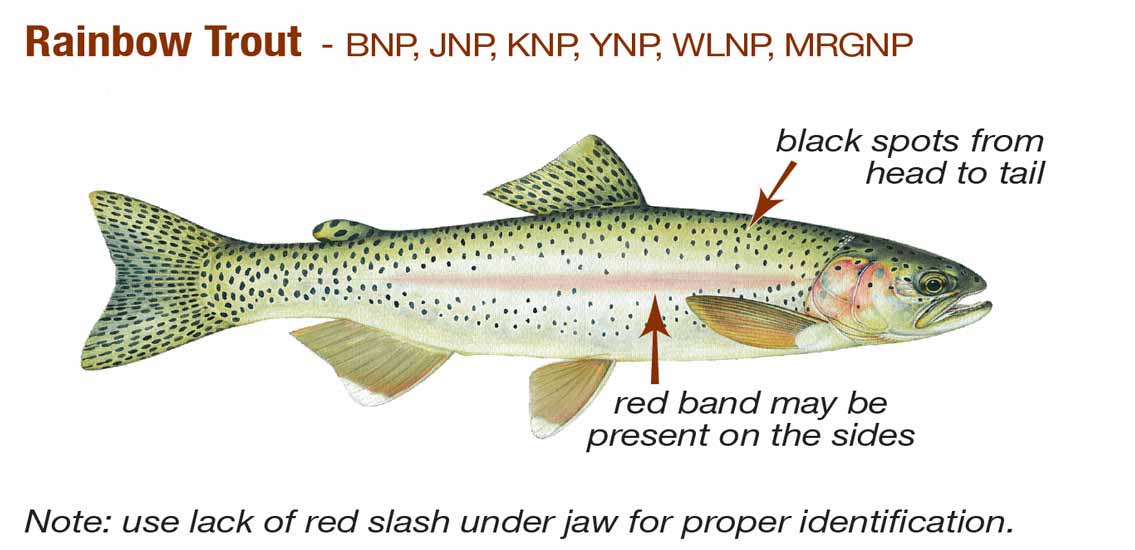
© Karl Geist
Introduced Rainbow Trout look very similar to Athabasca Rainbow Trout - a species at risk. To keep these fish safe, follow our fishing regulations.
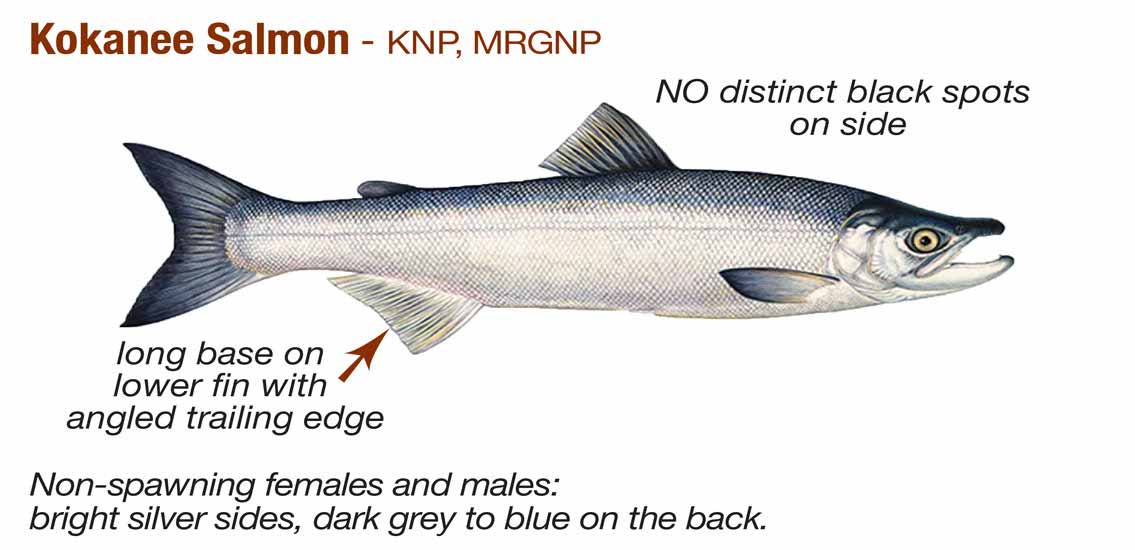
© Karl Geist

© Karl Geist
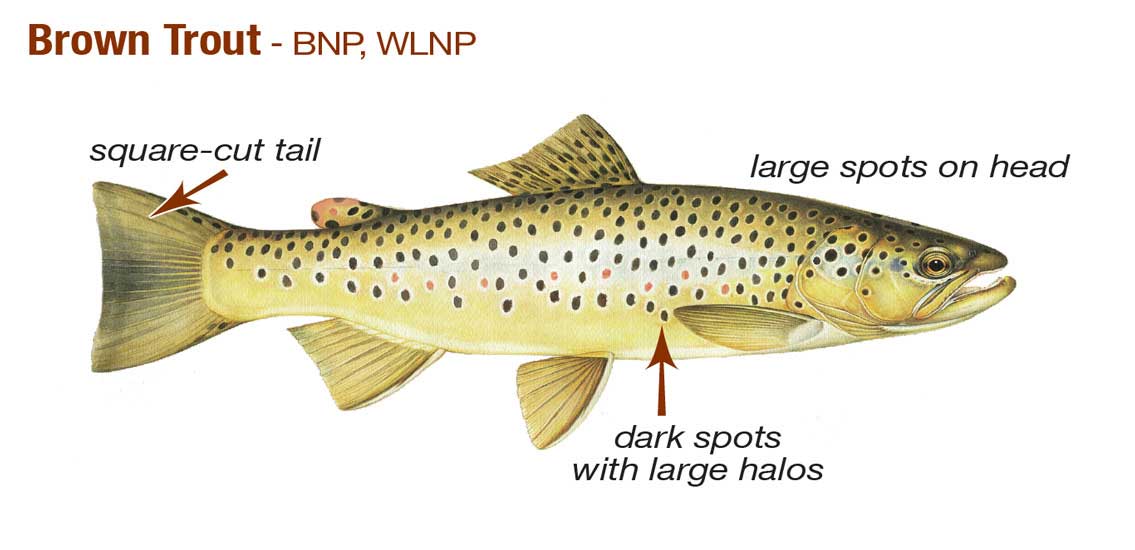
© Karl Geist
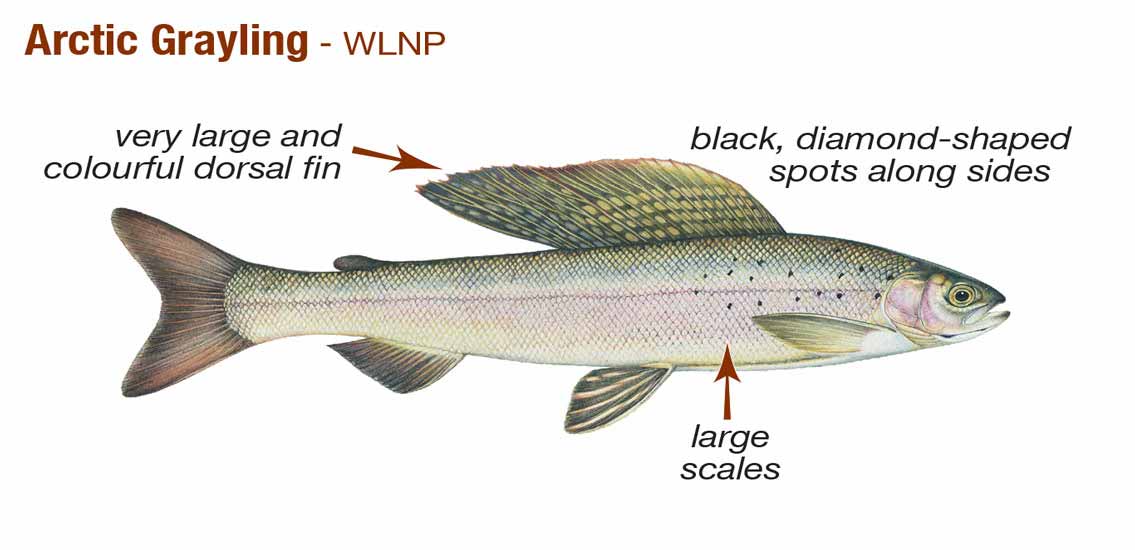
© Karl Geist
Species at risk
Artic grayling can be identified by their colourful and very large dorsal fin and by their large scales with brown spots on the body behind the head.
Artic Grayling are a species at risk due to overharvest and passage barriers.
No black spots on the body
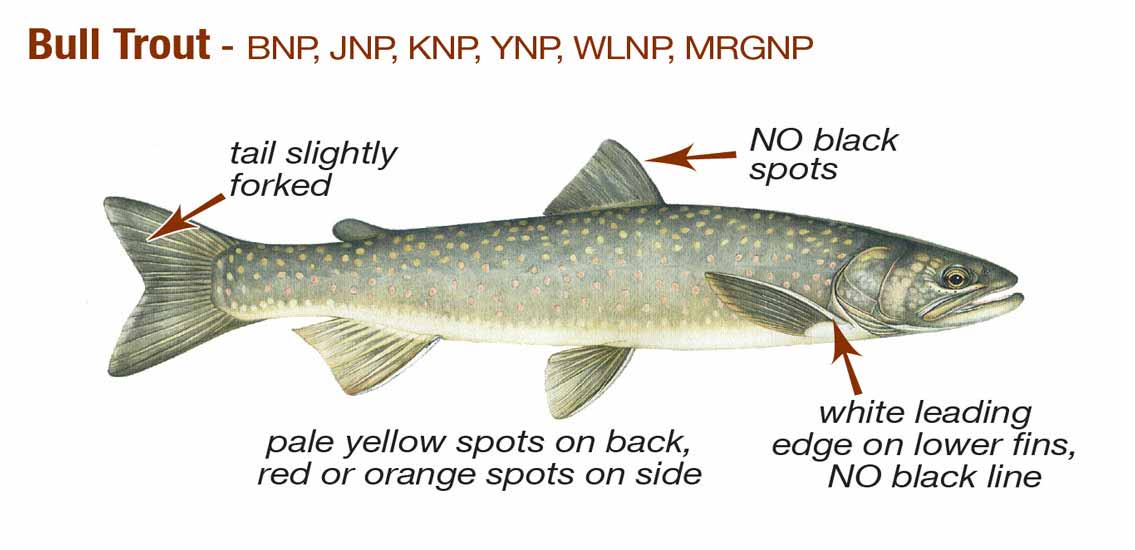
© Karl Geist
Species at risk
Bull trout are slim fish with a large head. Their back is olive-green to grey while their sides are silvery and marked with pale yellow to red spots. There are no spots on the dorsal fin.
Bull Trout are a threatened species due to small population and concerns of viability. They have a zero possession limit across the province – IF YOU CATCH THIS FISH YOU MUST RELEASE IT.

© Karl Geist

© Karl Geist
Species at risk
Lake Trout are a grey fish with irregular white spots and a forked caudal fin.
Lake Trout are a sensitive species due to being limited to a few lakes.
Others

© Karl Geist
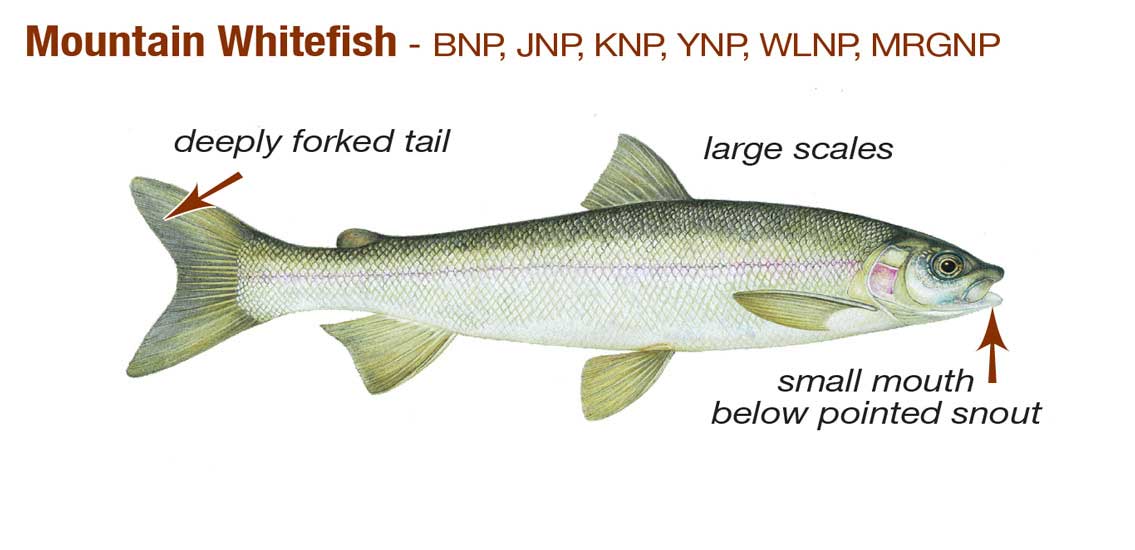
© Karl Geist
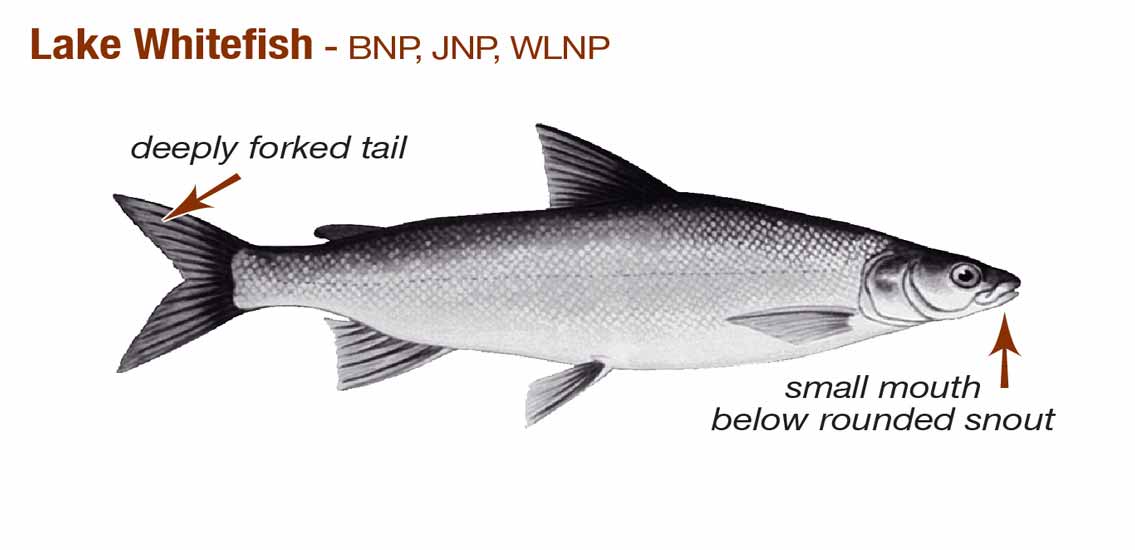
© Karl Geist
Report suspicious activities, poachers, polluters, or invasive species: 1-888-WARDENS (1-888-927-3367)
Related links
- Date modified :